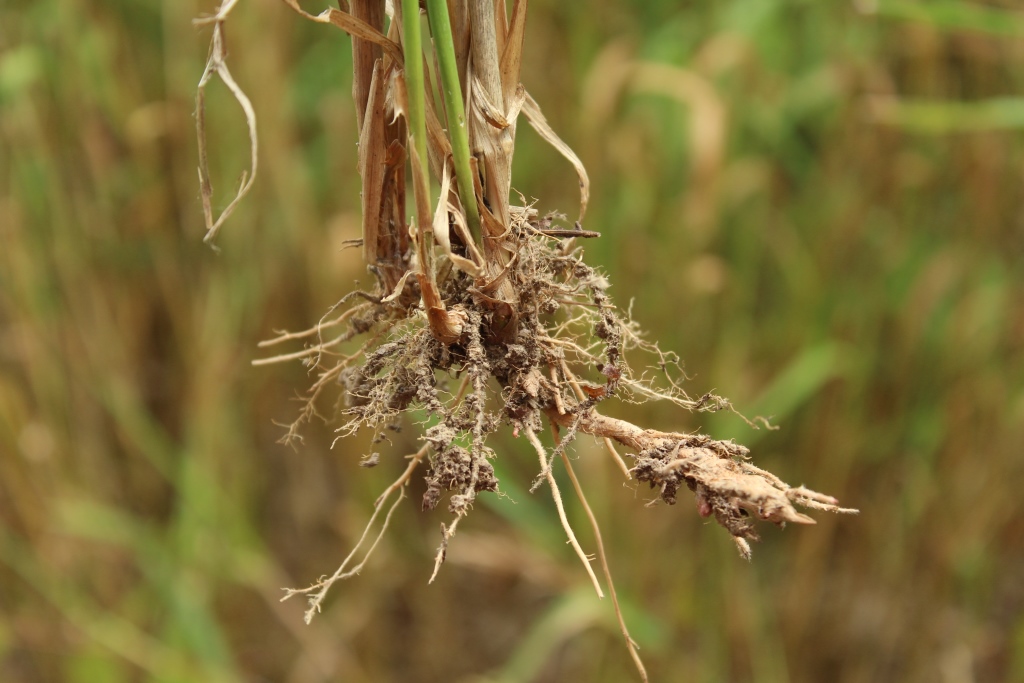Reed Canarygrass (Phalaris arundinacea)
Family:
Grass Family (Poaceae)
Other Names:
bride's-laces, doggers, lady-grass, London-lace, spires, sword-grass.
Origin and Distribution:
Reed canarygrass is a highly adaptive weed that is native to Europe and Asia. It was introduced to North America in the mid-1800's for forage, and is now widely distributed throughout southern Canada and the northern half of the U.S. Reed canarygrass is common in Ohio, and is found in all but a few western counties. This species is adapted to wet environments, and prefers poorly drained and frequently flooded soils, such as those of roadsides, lowland areas, wetlands, shores and irrigation ditches. However, it can grow in well-drained areas, and is relatively drought tolerant. Although it is tolerant of acidic soil, reed canarygrass is susceptible to winterkill. Despite this fact, reed canarygrass is still one of the highest yielding perennial forage grasses.
Plant Description:
Reed canarygrass is a tall, coarse, sod-forming, cool-season perennial, characterized in summer by its two-tone appearance of golden seedheads atop green foliage. It reproduces through seeds and more typically by vigorous rhizomes (horizontal underground stems). This species tends to grow in clumps 3 feet or more in diameter, and can form large, dense colonies.
Root System:
Reed canarygrass has short, stout, scaly, creeping rhizomes (horizontal underground stems). Roots develop from the joints (nodes) of the rhizomes to form a thick, fibrous root mass.
Stems:
Stems are erect, round, stout, leafy, smooth and bluish-green, growing 2 to 5 feet tall (sometimes up to 8 feet).
Leaves:
Leaves are rolled in the bud. The LEAF BLADE (free part of the leaf) is flat, hairless and rough along the edges. Blades are 4 to 14 inches long and 1/4 to 3/4 inch wide, and the base of the blade appears broad in contrast to the sheath. The LEAF SHEATH (part of the leaf surrounding the stem) is smooth and rounded, and the sheath margins mostly overlap except for a "V" at the top. The ligule (projection on the inside of the leaf at the junction of the blade and sheath) is membranous, and 1/8 to 1/4 inch long. AURICLES (appendages at the top of the sheath) are absent.
Flowers:
Compact clusters of flowers are borne on short branches within a dense, narrow flower head (2 to 8 inches long, sometimes up to 12 inches) produced at the top of the stem. Flower branches are spreading at the onset of flowering, but close up next to the stem at maturity, giving the flower head a spike-like shape. The flower head gradually changes from green to purple to golden tan when seeds are formed.
Fruits and Seeds:
Seedheads normally extend well above the leaves of the plants and are golden tan at maturity. As the seedheads first mature, the remaining foliage is usually still green, resulting in a striking clump of green with golden tops. The shiny seeds (1/8 inch long) may vary from tan to gray-black and resemble a narrow teardrop.
Similar Species:
Reed canarygrass may be confused with common reed (Phragmites australis), which grows in similar habitats. However, common reed grows much larger, 6 to 14 feet tall, and has a hairy rather than membranous ligule. A cultivated variety of reed canarygrass, often referred to as ribbon grass (Phalaris arundinacea var. picta), is frequently used as an ornamental in gardens, and sometimes escapes cultivation. This form has green leaves that are striped with white or cream.
Biology:
Shoots begin to emerge in mid-April. Reed canarygrass flowers between late May and August. The golden tan mature seedheads are a striking contrast to the green foliage below them. Seeds can germinate immediately upon maturation or the following season. This species can form persistent, single-species stands, and over time, the seedbank may actually become devoid of other plant species. Reed canarygrass is commonly spread by transporting rhizome-infested soil from riverbanks and other wet areas, often resulting in large, dense colonies.
Reed canarygrass can be a very profitable forage grass, and is often used for erosion control along waterways and around ponds. However, it can become troublesome when it invades fields and chokes out less competitive crops. This species has also become a serious threat to native wetland plant communities. It does not tolerate repeated close mowing and frequent cultivation.
Toxicity:
Reed canarygrass contains several potentially toxic alkaloids. Poisonings have been reported in New Zealand and Norway for sheep that have fed on reed canarygrass, resulting in a condition referred to as "phalaris staggers". However, no poisonings have been reported in North America.
Facts and Folklore:
Grasses of the genus Phalaris have been collected from every major landmass with the exception of Antarctica and Greenland.
Canarygrass (Phalaris canariensis), an annual relative of reed canarygrass, is used to produce commercial canary seed, and is native to the Canary Islands.
Reed canarygrass is an important tool for removing nitrogen and other nutrients from soil treated with wastewater effluents.

Reed canarygrass seedling at 4-leaf stage.
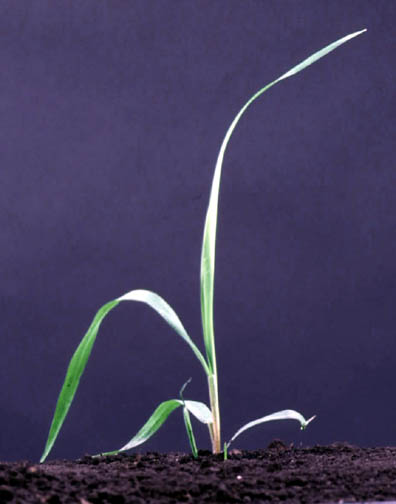
Reed canarygrass seedling.
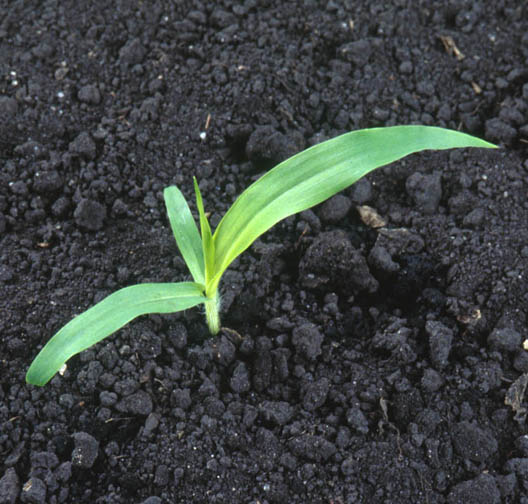
Reed canarygrass; note prominent flat leaf blades.
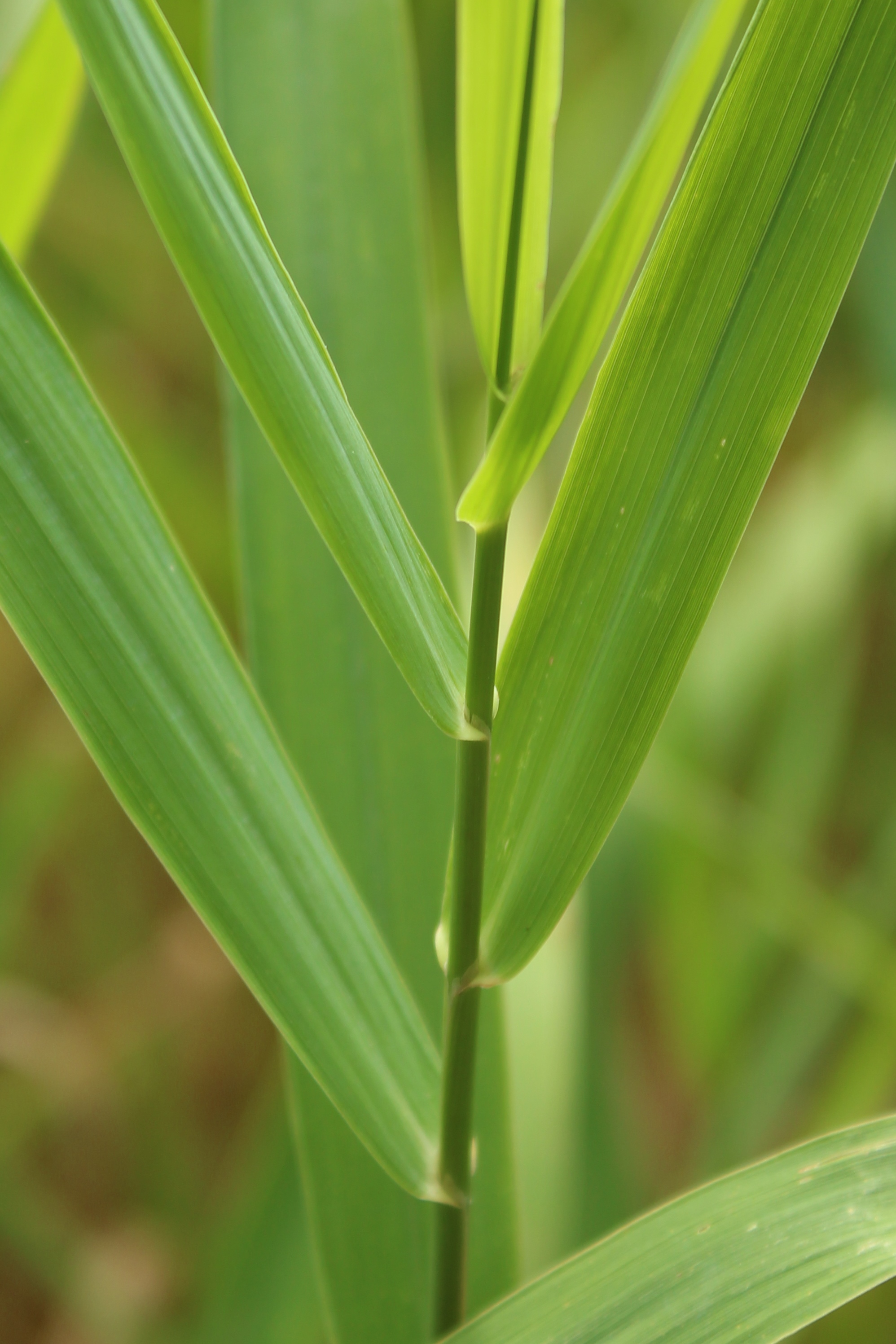
Reed canarygrass leaf and stem.
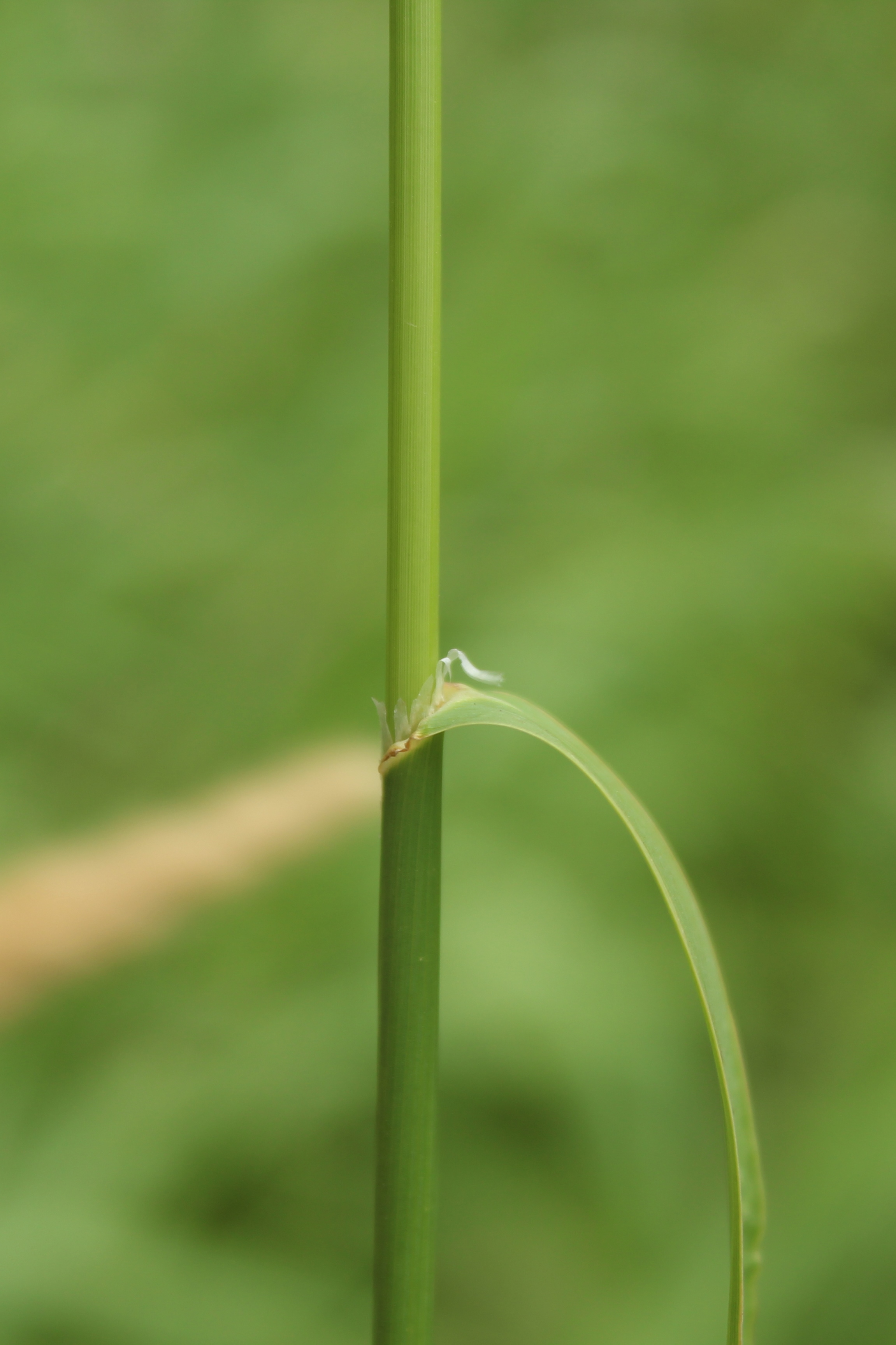
Reed canarygrass sheath and base of blade.
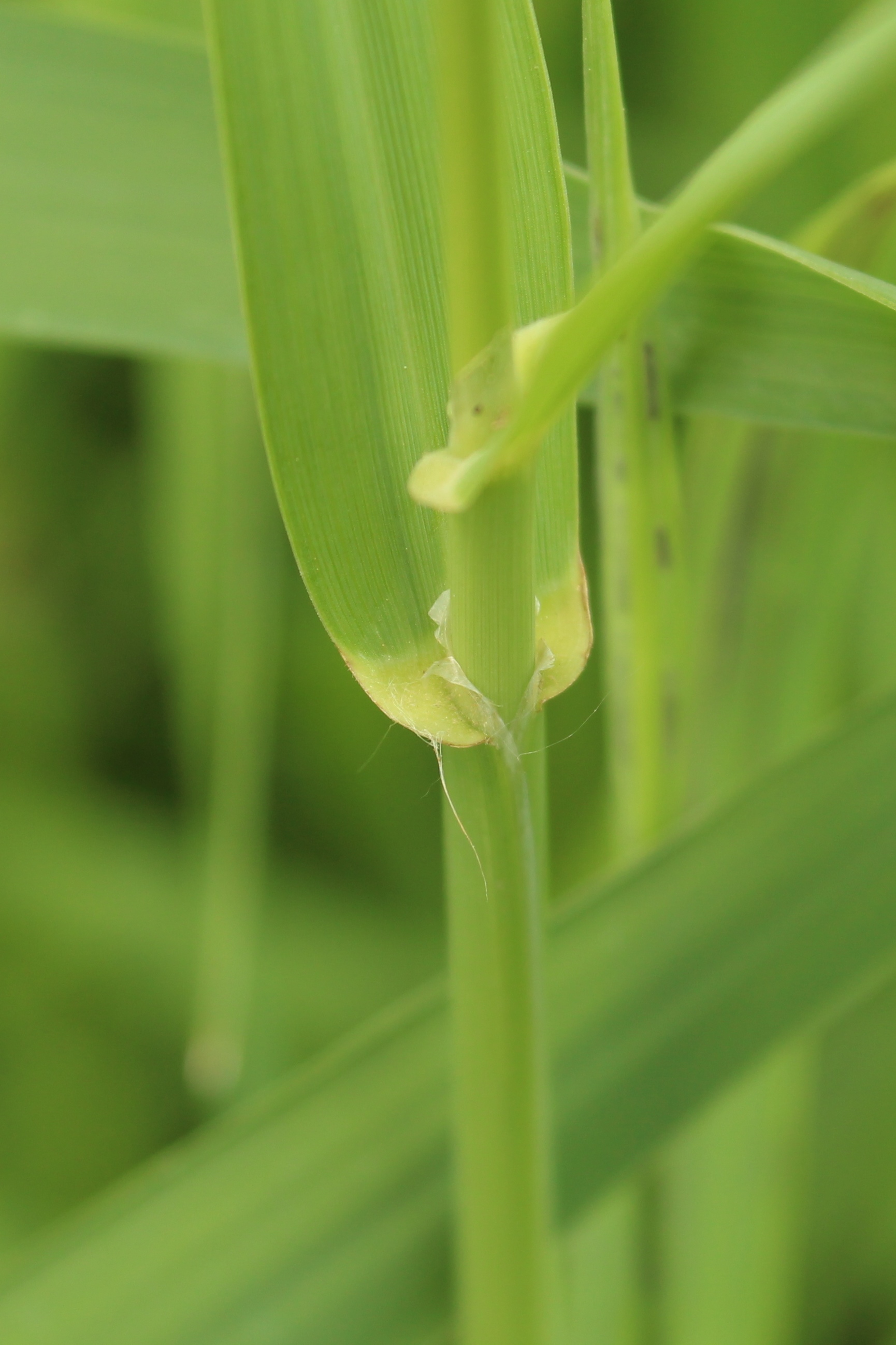
Reed canarygrass seedhead.

Reed canarygrass seedhead.
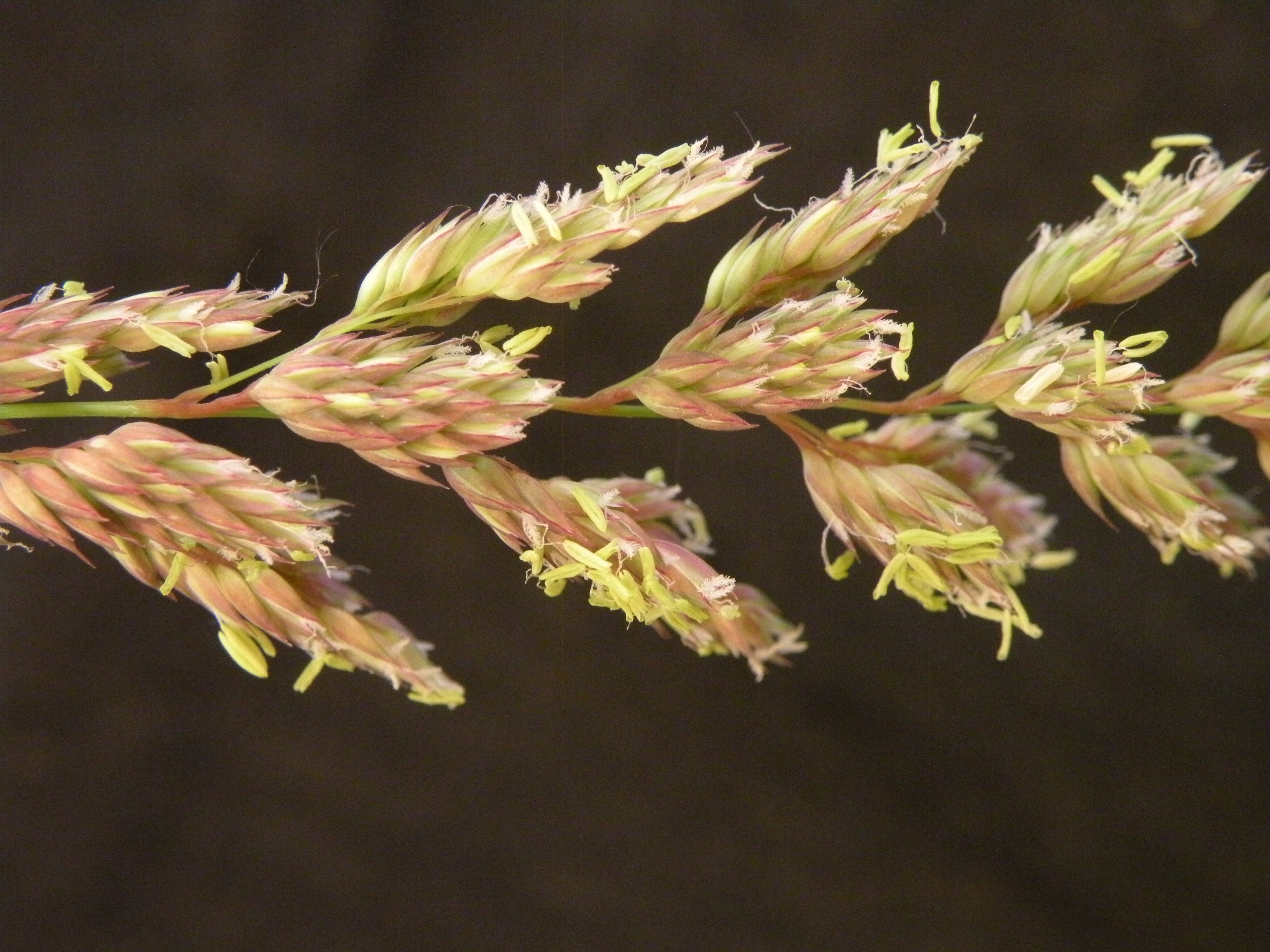
Reed canarygrass seeds.

Reed canarygrass.
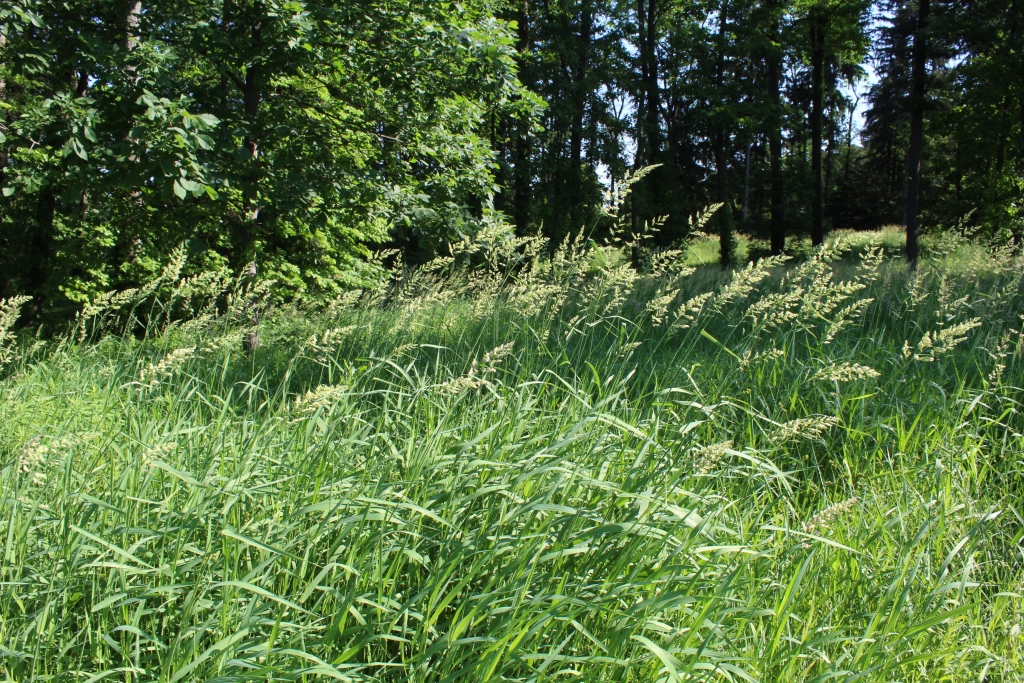
Reed canary grass membrane

Reed canarygrass roots.
